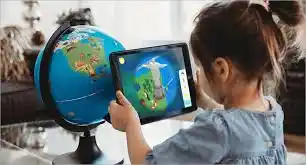Top 10 Applications of 3D Printing

3D printing has revolutionized various industries by offering innovative solutions to age-old problems.
This technology, also known as additive manufacturing, involves creating three-dimensional objects from digital models by layering material upon material.
From healthcare to aerospace, let’s explore the top 10 applications of 3D printing that have made a significant impact across different sectors.
1. Rapid Prototyping
One of the earliest and most widely recognized applications of 3D printing is rapid prototyping.
Engineers and designers can quickly create physical prototypes of their designs, enabling them to test and refine their ideas before committing to full-scale production.
2. Medical Implants and Prosthetics
The medical field has embraced 3D printing to create customized implants and prosthetics. This technology allows for precise tailoring of implants to individual patients, improving comfort and functionality.
3. Aerospace Components
3D printing has played a crucial role in the aerospace industry, producing lightweight and complex components that are difficult to manufacture using traditional methods. This has led to reduced weight and enhanced fuel efficiency in aircraft.
4. Automotive Parts
Car manufacturers are using 3D printing to produce spare parts and specialized components. This reduces the need for large warehouses of spare parts and enables on-demand manufacturing.
5. Art and Jewelry
Artists and jewelers have embraced 3D printing to create intricate and unique pieces. This technology allows for the production of complex designs that would be challenging or impossible to achieve through traditional methods.
6. Food Industry
3D printing has even entered the culinary world. Chefs and food enthusiasts can use specialized 3D printers to create intricate and visually appealing dishes, pushing the boundaries of food presentation.
7. Architecture and Construction
Architects and construction firms are utilizing 3D printing to create detailed models, intricate facades, and even entire buildings. This technology speeds up the prototyping and construction processes.
8. Education
3D printing is transforming the way students learn by enabling hands-on experience in creating physical objects from digital designs.
This technology is being integrated into various educational disciplines to foster creativity and problem-solving skills.
9. Fashion and Wearable Technology
Designers are using 3D printing to create avant-garde fashion pieces and wearable technology that seamlessly integrates electronics and aesthetics.
Tooling and Manufacturing
3D printing is streamlining the production of specialized tooling and manufacturing equipment. This technology allows for the rapid creation of jigs, fixtures, and molds, reducing lead times and costs.
FAQs
How does 3D printing work?
3D printing involves creating objects layer by layer from a digital model. A 3D printer deposits material, such as plastic, metal, or resin, in successive layers to build up the final object.
What materials can be used in 3D printing?
A wide range of materials can be used in 3D printing, including plastics, metals, ceramics, and even food materials for specialized applications.
What are the advantages of 3D printing over traditional manufacturing?
3D printing offers advantages such as faster prototyping, reduced material waste, customization, and the ability to create complex geometries that are difficult to achieve using traditional methods.
What are the limitations of 3D printing?
Some limitations of 3D printing include limited material options for certain applications, slower production speeds compared to mass production methods, and the need for post-processing to achieve desired surface finishes.



